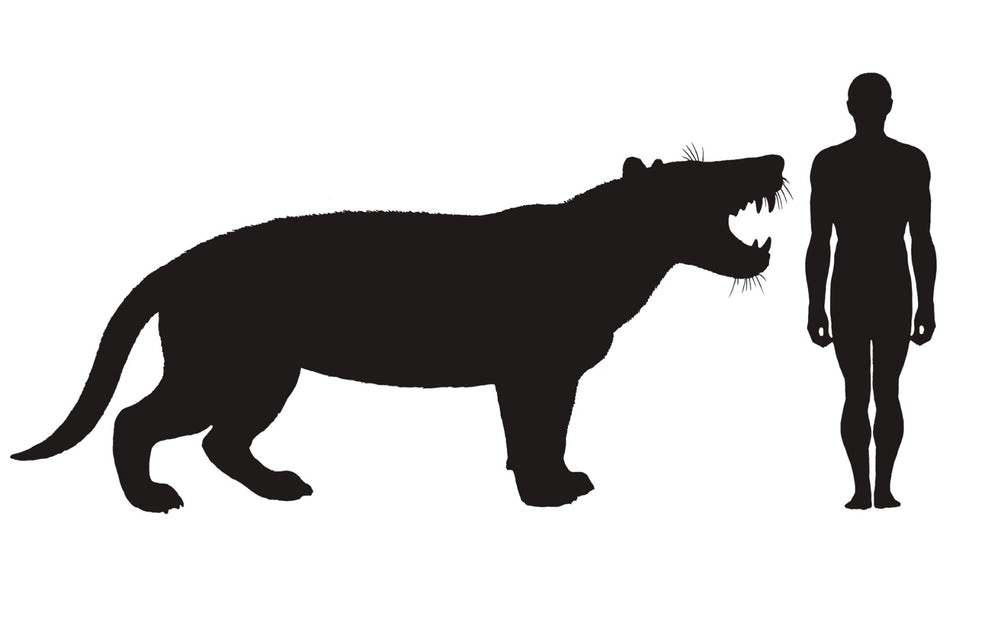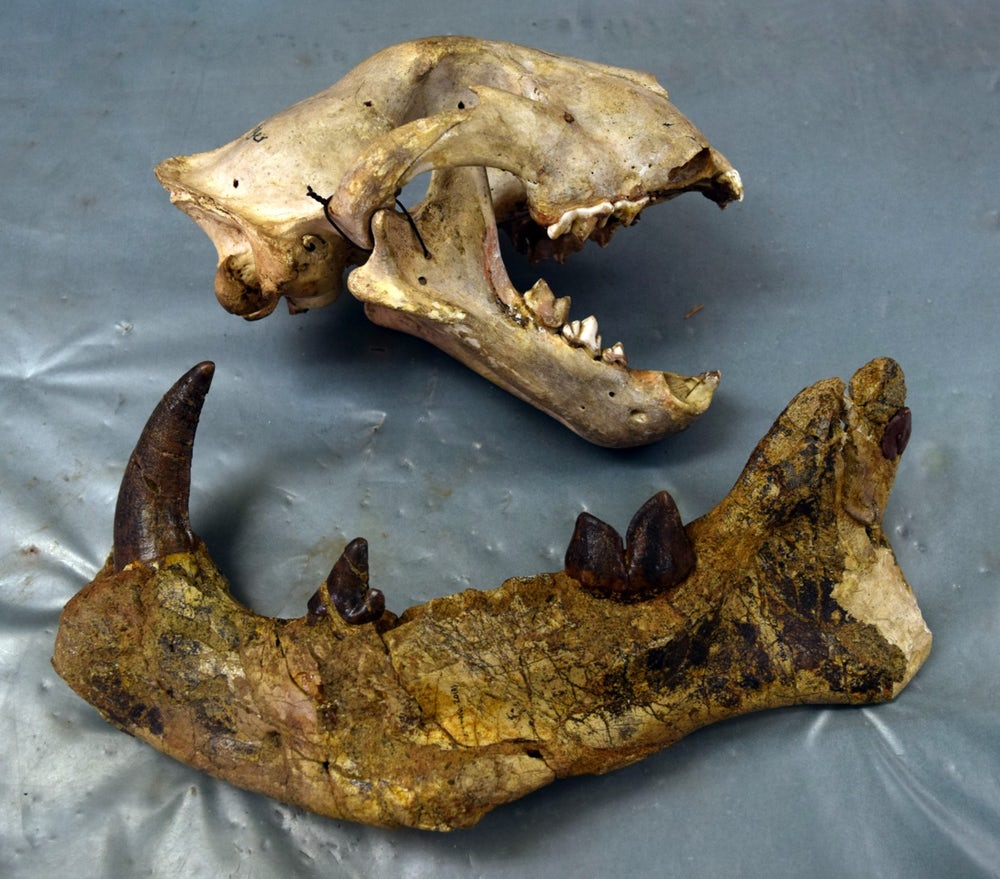After sitting in a drawer in a Kenyan museum for more than 40 years, a set of fossilized bones has introduced the world to a long-lost mega-carnivore from 22 million years ago. Bigger than a polar bear and possessing enormous canine teeth, meet Simbakubwa Kutokaafrika.
 Simbakubwa Kutokaafrika was rather large compared to a human. (Credit: Mauricio Anton).
Simbakubwa Kutokaafrika was rather large compared to a human. (Credit: Mauricio Anton).
The bones were dug up in the Meswa Bridge locality of Kenya many decades ago, but left unexamined as the researchers were concentrating on ancient apes at the time. A pair of Ohio University paleontologists eventually found them in a drawer at the National Museums of Kenya and immediately recognized their significance.
From most of a jaw, parts of a skull and some bits of skeleton, the researchers were able to identify and name a species new to science: Simbakubwa (Swahili for “lion big”) Kutokaafrika (“from Africa”). These huge carnivores stood more than five feet (1.5 m) tall on four legs, weighed anywhere up to 3,300 lb (1,500 kg), and were one of the final examples of a family of mammalian carnivores called hyaenodonts that were Africa’s apex predators for about 45 million years.
Dr. Matthew Borths holds up the huge jawbone of Simbakubwa Kutokaafrika. (Credit: Ohio University).
Hyaenodonts were the first carnivorous mammals to appear in Africa, arriving after non-avian dinosaurs like Tyrannosaurus rex went extinct some 65 million years ago. Not closely related to big cats, hyenas, bears or dogs, hyaenodonts ruled the continent of Africa for an incredibly impressive 45 million years before going extinct as the global climate dried up and forests were replaced by grasslands.
The fossilized remains sat in a drawer in a Kenyan museum for over 40 years before anyone took a closer look at them. (Credit: Ohio University).
“This is a pivotal fossil, demonstrating the significance of museum collections for understanding evolutionary history,” says Dr. Nancy Stevens, Professor in the Heritage College of Osteopathic Medicine at Ohio University and co-author of the study. “Simbakubwa is a window into a bygone era. As ecosystems shifted, a key predator disappeared, heralding Cenozoic faunal transitions that eventually led to the evolution of the modern African fauna.”
The study detailing the beast was published in the Journal of Vertebrate Paleontology.
Source: Ohio University











